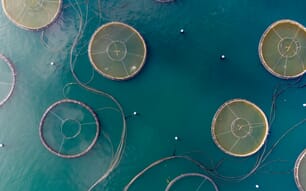The process is based on using powdered clay to sink the algae to the seabed – a technique created to keep swimming pools clear during the Chinese Olympics in 2008.
David Farcas, general manager of Centrovet commented that they started working on this concept after a meeting with representatives from Chile’s Technological Institute of Salmon (Intesal), when they were asked to adapt this novel Chinese solution to recent algal problems experienced by the Chilean salmon industry.
Almost 40,000 tonnes of salmon were lost in Chile due to HABs in early 2016. Moreover, companies listed on the country’s stock exchange reported losses of about US$ 100 million as a result of mortalities generated by the HABs of Pseudochattonella cf. verruculosa in the region of Los Lagos, while on Chiloe Island the unemployment rate doubled because of this phenomenon.
He explained that the Chinese Institute of Oceanology created this technology some years ago. It consists of modifying the surface electrical charge of the clay, so that – when added to water – the particles stick to any microalgae they come in contact with and then sinks them to the seabed, where they die due to lack of oxygen.
One of the first know uses of this technique was in swimming pools during the 2008 Olympic Games, when this technology succeeded at turning green water with a high load of microalgae clear in just a few hours.
Currently, Centrovet and Intesal are performing the final trials in the experimental unit of an important university in the United States. These trials are intended to validate the best method of clay application, establish which kind of clay is the most effective and work out what concentration is required to subsequently control the particular microalgae that affects the Chilean salmon industry.
“Our idea is to develop solutions against the specific problems of the local industry. Then, we need to obtain proper approval from the corresponding environmental authorities in a process we expect to be concluded in 2018,” Farcas said.
He also commented that his company expects to include all related governmental authorities in the process, since this technology also has potential to mitigate the effects of those algae blooms which also affect both the mussel industry and small fishermen in Chile.
Finally, he added that the solution could be also applied in the future against those HABs that pose a threat to aquaculture industries of other countries, such as salmon production in Canada, Scotland, and Norway.


